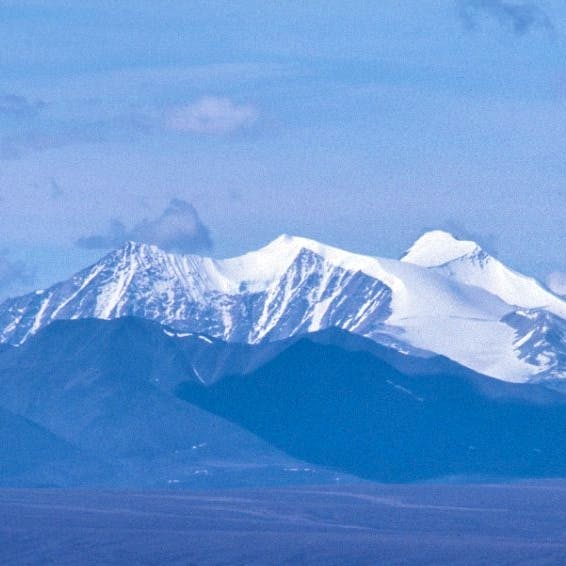HOUSTON (August 19, 2013) – Adding to a string of recent state and federal governmental transparency issues, the Texas Comptroller’s Office finds itself at the center of a scandal involving a highly criticized state plan that ostensibly is designed to conserve the imperiled dunes sagebrush lizard. The U.S. Fish and Wildlife Service relied heavily on this plan in its decision to not list the lizard under the Endangered Species Act (ESA). A report published by Defenders of Wildlife following an investigation into oil and gas development on lizard habitat reveals a case of negligent monitoring, self-reporting, conflicts of interest and secrecy surrounding mitigation money.
The following is a statement from Ya-Wei Li, Endangered Species Policy Advisor, Defenders of Wildlife:
“When we launched our investigation into the management of dunes sagebrush lizard habitat in Texas, we could never have predicted the extent to which it was being mishandled.
“Given the terms of the Texas plan, it seemed suspicious that the Comptroller’s reports cited no habitat disturbance through May 2013, when the areas in question are experiencing some of the heaviest oil and gas development in Texas. Our suspicions were confirmed when we acquired aerial photographs of the region that revealed multiple instances of new development destroying what is supposed to be protected lizard habitat. Clearly the Comptroller’s reports are grossly misleading and erroneous. Adding insult to injury, we discovered that the organization hired by the Comptroller to monitor the habitat is directed by lobbyists for the Texas Oil and Gas Association. This is a perfect example of what can happen when the proverbial fox is guarding the hen house.
“If the undeniably false self-reporting isn’t implicating enough, the Comptroller’s Office has also failed to meet any acceptable level of government transparency. Aside from barring access to the underlying conservation documents that would actually show the quality of the Texas plan, the Comptroller’s Office has refused to release financial records indicating what mitigation fees have been collected from plan participants and how any fees would conserve the lizard. If there truly has been no development, then there should not be a dollar to hide.
“After seeing the flagrant disregard for the conservation plan and lack of transparency by the Comptroller, the Fish and Wildlife Service really has no choice at this point but to reject the Texas plan and promptly reassess whether the dunes sagebrush lizard warrants endangered status and deserves to be listed under the ESA.”
Background:
In December of 2010, the U.S. Fish and Wildlife Service (the Service) proposed to list the dunes sagebrush lizard as “endangered,” decades after it had first recognized the species’ troubled status – by 1982, the lizard had already lost over 85% of its habitat in New Mexico. Under tremendous political pressure not to list the lizard, the Service later reversed itself and declined to list the species, relying heavily on voluntary lizard conservation commitments between private landowners and the Texas Comptroller under what is known as the Texas Conservation Plan. The plan itself does not describe any of these commitments in detail; instead, they are clarified only in certificates of inclusion between the landowners and the Comptroller. Because of the Comptroller’s narrow interpretation of Texas law, these certificates are not available to the public or the Service and have been kept confidential. The Service made its decision not to list the lizard without having reviewed all the certificates, thus having no real knowledge of what conservation commitments had actually been made by the participating landowners and how the lizard would be protected under the plan. This negligence prompted Defenders of Wildlife to issue a report in March of this year exposing the serious flaws with the Texas plan, followed by a lawsuit that it has filed against the Service over its decision to not list the species. Defenders followed up by investigating the level of unreported land disturbances on lizard habitat.
The Comptroller is responsible for actively monitoring any habitat disturbance under the Texas Plan and reporting its findings to the Service on a monthly basis. The Comptroller, which has contracted with the Texas Habitat Conservation Foundation to oversee implementation of the plan, has reported “no disturbance” of habitat through May 2013. The Foundation’s board consists solely of lobbyists for the Texas Oil and Gas Association. Defenders acquired and analyzed aerial photographs of several sites enrolled in the Texas Plan and discovered numerous examples of new oil and gas development destroying lizard habitat over the past year. None of these incidents have been reported to the Service. Drilling permits, all approved within the past 14 months (and available on the Texas Railroad Commission website), correspond with the locations of the oil well pads found during the investigation. The total amount of habitat disturbance under the plan is capped at one percent within the first three years. If the disturbance continues to go unreported, the Service will have no way to know if and when the one percent limit is reached.
###
Download a copy of the full report
View a supplemental slide show including aerial photographs
View the aerial photographs on Flickr
Download a copy of the March 2013 report
Contact: Courtney Sexton, 202-772-0253, csexton@defenders.org
Defenders of Wildlife is dedicated to the protection of all native animals and plants in their natural communities. With more than 1 million members and activists, Defenders of Wildlife is a leading advocate for innovative solutions to safeguard our wildlife heritage for generations to come. For more information, visit www.defenders.org and follow us on Twitter @DefendersNews.
For over 75 years, Defenders of Wildlife has remained dedicated to protecting all native animals and plants in their natural communities. With a nationwide network of nearly 2.1 million members and activists, Defenders of Wildlife is a leading advocate for innovative solutions to safeguard our wildlife for generations to come. To learn more, please visit https://defenders.org/newsroom or follow us on X @Defenders.
News

Defenders Slams Trump Interior Pick Burgum

